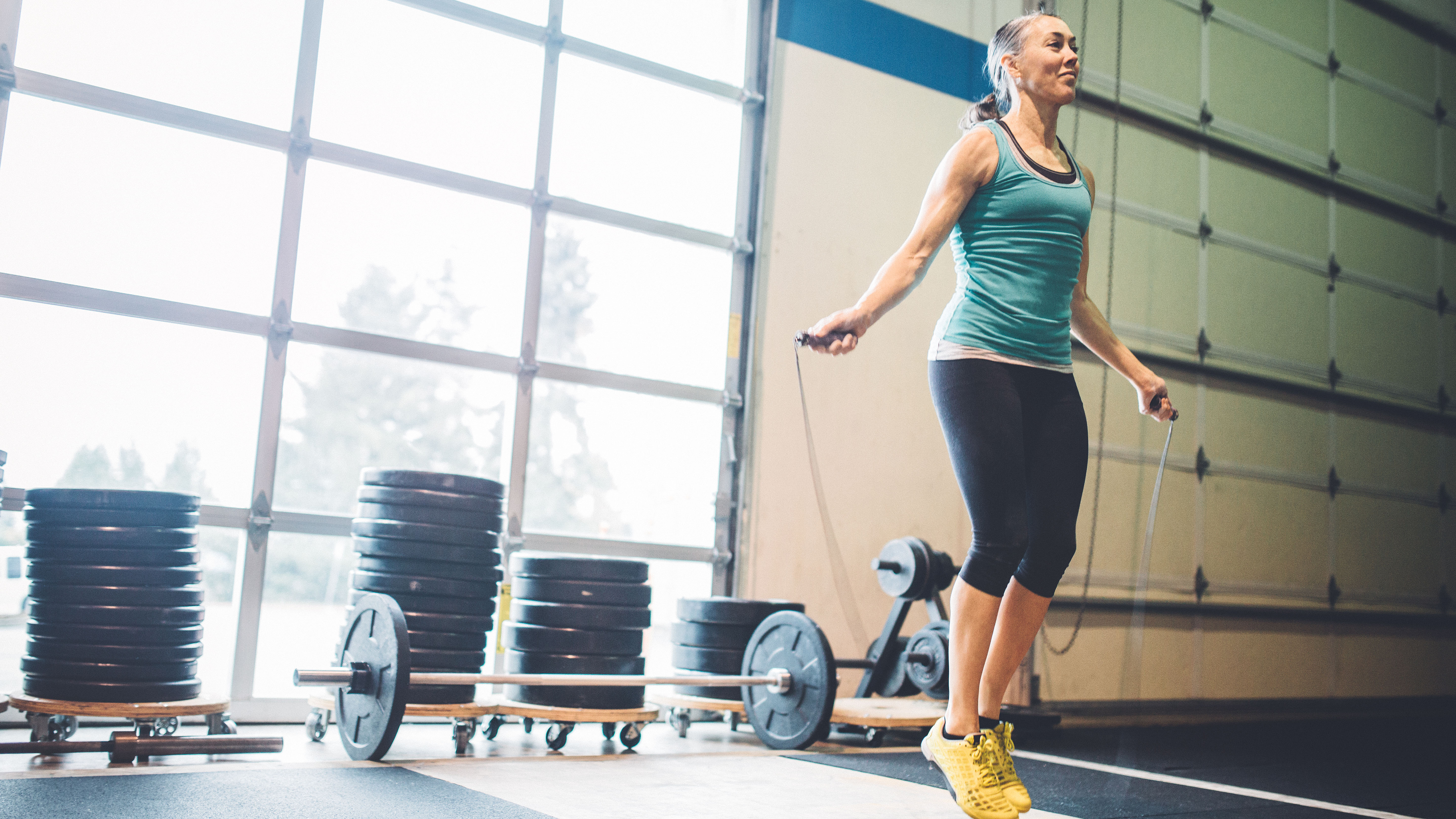Anaerobic exercise: What it is and how it affects the body
Anaerobic exercise is crucial in maintaining your physical health – but what is it?

You’ve most likely heard of anaerobic exercise before, but how much do you know about the science behind this vital aspect of your physical fitness? Enhancing your comprehension of the anaerobic energy system is a sure-fire way to empower yourself and give your workouts a boost.
Anaerobic exercise is any physical activity performed at a high intensity for a short spell of time. In reality, that can mean jumping on one of the best exercise bikes for a short sprint, skipping or even weightlifting – as long as the intensity is high and the duration short, you’ll be placing your body into an anaerobic state.
What is anaerobic exercise?

An anaerobic routine involves short bursts of high-tempo physical activity punctuated by interval periods of either rest or recovery exercises. Sprinting, pushups, pull-ups, burpees, jumping and throwing are all prime examples of anaerobic exercises as they encompass brief periods of energy-sapping movements.
The key is timings: sustain the exercise for the right amount of time and the body will break down glucose to provide energy for muscles as they work, the chief process in entering and maintaining an anaerobic state. However, if this intensity is maintained for too long, the body will begin to send oxygen to transport the glucose to the muscles, meaning it has instead entered an aerobic state.
A perfect example of anaerobic exercise is high-intensity interval training (HIIT), according to the exercise physiologist Richard Avery. “HIIT is also a popular and effective way of incorporating anaerobic exercise into your training,” he says. “HIIT combines repeated short bursts of intense activity, with rest or lower-intensity recovery periods in between, to help target the anaerobic energy system.”

Avery is an exercise physiologist and an applied sport and exercise scientist at the University of East London. He holds an MSc in exercise physiology and currently splits his time across teaching, consultancy work and research.
What happens to your body during anaerobic exercise?
When engaged in anaerobic exercise, the body breaks down glucose, which essentially acts as a fuel from which adenosine triphosphate (ATP) molecules are formed.
“ATP molecules store energy within our cells,” says Avery, “which can quickly be released for muscle activity to take place. Once ATP is used for energy it needs to be resynthesized, but during anaerobic exercise the ATP cannot be replenished as quickly as the rate at which it is being used. This is why high-intensity activities can only be sustained for periods of up to three minutes.”
Once your body has exhausted its ATP reserves, it begins to use oxygen to transport energy to the muscles. At that point, it enters into an aerobic state. That’s why the interval periods in anaerobic workouts are vital: they allow the body to restore ATP within the cells.

Using HIIT as an example, Avery says: “HIIT uses lower-intensity periods to recover between anaerobic efforts. During recovery periods in HIIT sessions, you will notice higher than usual breathing frequency and heart rate, as the body has an increased oxygen demand to restore ATP within the cells.” The necessity of this recovery period is the core philosophy behind circuit training, the enduringly popular style of working out where you alternate between different parts of the body. As Avery says, “Circuit training switches to different muscle groups, to allow individual muscles time to recover ATP stores.”
What’s the difference between anaerobic and aerobic exercise?
The big question pertains to the difference in outcomes when you compare anaerobic workouts with aerobic ones. Why is it important to train the body in ways that preclude the body’s oxygen system from supplying the muscles?
It’s important to note that while neither state can necessarily be deemed as superior in promoting physical benefits – at least according to one article published in the World Journal of Cardiology – aerobic exercise is proven to strengthen the heart and the respiratory system. Anaerobic exercise is useful for improving your endurance, as well as developing the efficiency with which your body uses oxygen. It also strengthens muscles and bones and optimizes the way that your muscles deal with lactic acid buildup.
Anaerobic exercise has also been linked to improved mood states, post-exercise, with a review published in The Journal of Psychology suggesting that the latter offers greater benefits in tackling stress and anxiety. Remember, though, the key is short bursts and high intensity to ensure the body is engaging the correct energy system.
“At any given time, all three energy systems are active, but the contribution from each system largely depends on exercise intensity,” says Avery. “The phosphagen system has the fastest ATP production rate, but can only be sustained for around 10-30 seconds. During high-intensity exercise the glycolytic system is the main anaerobic energy pathway from 30 seconds to two minutes of the activity.” Beyond that, your body will exhaust its ATP reserves and you won’t be feeling the benefits of an anaerobic state.

Is anaerobic exercise important for your fitness?
Yes, anaerobic exercise is definitely important for fitness. “The American College of Sports Medicine and the NHS both recommend that all adults, aged between 18 and 65, should perform muscle strengthening activities at least twice a week,” says Avery.
For those entering middle age, anaerobic routines are especially important because they could help to maintain muscle and bone density, two areas that see a gradual and natural deterioration with the onset of age.
However, if you wish to increase bone density, Avery adds that this training “needs to be specific and progressive to stimulate increases in bone mineral density, or sometimes in cases of osteoporosis, to reduce the rate of bone mineral density loss.” To give an example, weight training is one proven way of developing bone strength.
Even long-distance runners and cyclists can feel the benefit of anaerobic workouts. While primarily aerobic routines, these activities incorporate elements of anaerobic energy systems. “As a runner, I incorporate aerobic and anaerobic exercise into my training,” says Avery, “which is beneficial for the initial quick start to a race and vital for that all-important sprint finish.”
Now you know the benefits of an anaerobic exercise routine, check out the best time to workout for optimal training, and ensure that your own weekly workouts incorporate some degree of interval-based high-intensity training. The more you do, the more you’ll gain and the benefits are undeniable.
Sign up for the Live Science daily newsletter now
Get the world’s most fascinating discoveries delivered straight to your inbox.
Dan Cooper is an experienced fitness writer who firmly believes in the power of running. The hardest race he has completed so far was Tough Guy, the world’s oldest and most demanding OCR event. There he learned that you may be able to outpace opponents, but outrunning hypothermia? That's a different race entirely.











